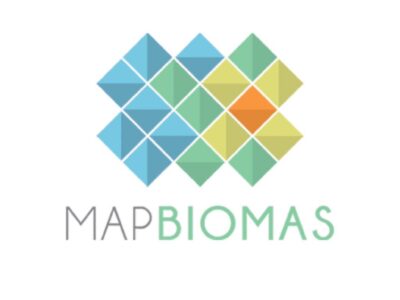
Fendrich et al. – Disclosing contrasting scenarios for future land cover in Brazil: Results from a high-resolution spatiotemporal model
In this work, we constructed a model to evaluate the possible consequences of policy actions on land cover dynamics in the near future at a high-resolution scale.

Alencar et al – Mapping Three Decades of Changes in the Brazilian Savanna Native Vegetation Using Landsat Data Processed in the Google Earth Engine Platform.
The Brazilian Cerrado represents the largest savanna in South America, and the most threatened biome in Brazil, owing to agricultural expansion. To assess the native Cerrado vegetation (NV) areas most susceptible to natural and anthropogenic change over time, we classified 33 years (1985-2017) of Landsat imagery available in the Google Earth Engine (GEE) platform.

Nunes et al – Unmasking secondary vegetation dynamics in the Brazilian Amazon
This article uses MapBiomas annual land cover time series data to generate the first estimates of the extent of VS, age, and net carbon absorption in the Brazilian Amazon between 1985 and 2017.

Saraiva et al- Automatic Mapping of Center Pivot Irrigation Systems from Satellite Images Using Deep Learning
In this paper, we propose a method to automatically detect and map center pivot irrigation systems using U-Net, and image segmentation convolutional neural network architecture applied to a constellation of PlanetScope images from the Cerrado biome of Brazil. Our objective is to provide a fast and accurate alternative to map center pivot irrigation systems with very high spatial and temporal resolution imagery.

Parente et al – Next Generation Mapping: Combining Deep Learning, Cloud Computing, and Big Remote Sensing Data.
This study evaluated, based on thousands of PlanetScope images obtained over a 12-month period, the performance of three machine learning approaches (random forest, long short-term memory - LSTM, and U-Net). We applied these approaches to mapped pasturelands in a Central region in Brazil.

Parente et al – Assessing the pasturelands and livestock dynamics in Brazil, from 1985 to 2017: A novel approach based on high spatial resolution imagery and Google Earth Engine cloud computing.
This work mapped, annually and in an unprecedented way, the totality of the Brazilian pastures, from 1985 to 2017. With an overall accuracy of about 90%, the 33 maps produced indicated the pasture area varying from ~118 Mha ±2.53% (2017), with this expansion occurring mostly in the northern region of the country and to a lesser extent in the midwest.

Diniz et al. – Brazilian Mangrove Status: Three Decades of SatelliteData Analysis.
This manuscript presents a Google Earth Engine (GEE) managed pipeline to compute the annual status of Brazilian mangroves from 1985 to 2018, along with a new spectral index, the Modular Mangrove Recognition Index (MMRI), which has been specifically designed to better discriminate mangrove forests from the surrounding vegetation. If compared separately, the periods from 1985 to 1998, and 1999 to 2018 show distinct mangrove area trends.

Souza, Jr. et al – Long-Term Annual Surface Water Change in the Brazilian Amazon Biome: Potential Links with Deforestation, Infrastructure Development and Climate Change.
In this study, we present a long-term spatiotemporal analysis of surface water annual change and address potential connections with deforestation, infrastructure expansion, and climate change in this region.

Mas et al – Analysis of High Temporal Resolution Land Use/Land Cover Trajectories.
In this study, methods, originally developed to assess life course trajectories, are explored in order to evaluate land change through the analysis of sequences of land use/cover. Annual land cover maps that describe land use/land cover change for the 1985-2017 period for a large region in Northeast Brazil were analyzed.

Costa et al – Novas tecnologias e sensoriamento remoto: aplicação de uma oficina didática para a disseminação das potencialidades dos produtos e ferramentas do MapBiomas.
This work aimed to report the experiences of the application of a didactic workshop that dealt with the potential of the products and tools of the MapBiomas Project in a class of the Graduate Program in Earth and Environmental Science Modeling, from the State University of Feira de Santana.

